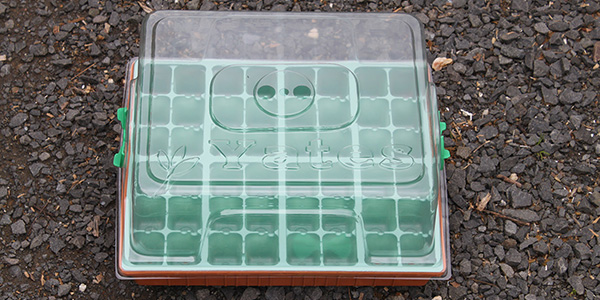Having a dipping drum in your garden is useful as it allows you to fill a watering can in much less time than it does filling it from a tap. This page explains the benefits of a dripping drum.
A dipping drum is a watertight container that is open at the top and wide enough to allow a watering can to be dipped into it. Any large watertight container can be used as a dipping drum. My current dipping drum is a small water tank that came with a separate lid that I discarded, though my original dipping drum was an old forty four gallon drum.
The main use of a dipping drum is for filling up watering cans. Filling a 9 litre watering can from my dipping drum takes about five seconds whereas filling it using a tap takes over twenty seconds, making it much quicker to fill a watering can using a dipping drum then from a tap.
Filling an 9 litre watering can using a dipping drum and garden tap time comparison.
My main reason for filling a watering can is to apply liquid fertilser to my vegetables. Firstly I add some liquid fertilser concentrate to the watering can before filling it with water from the dipping drum.
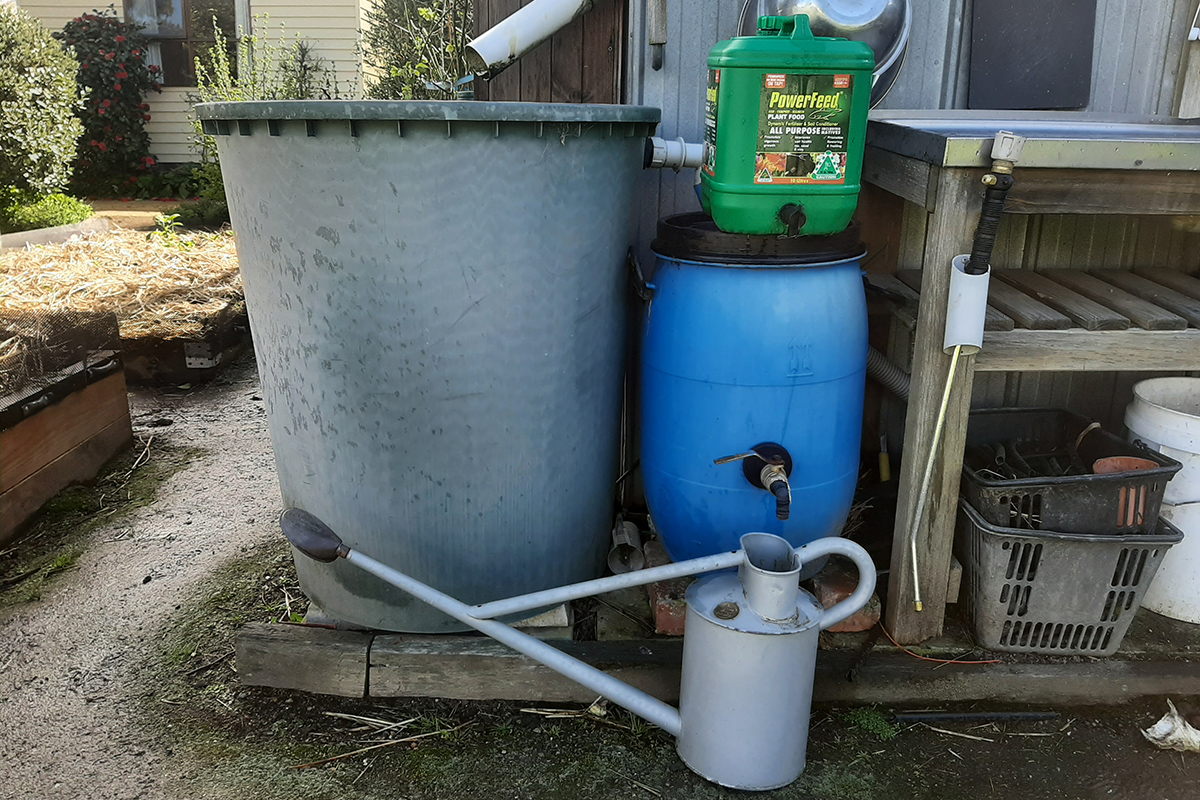
Next to my dripping drum I have Powerfeed liquid fertilser (green drum) and my own liquid fertilser concoction made from chicken manure, blood and bone, Seasol and water (larger blue drum).
Having to fill the dipping drum using a hose would defeat the purpose of the drum so it needs to be sited under a downpipe from a gutter so that it is filled up automatically when it rains. Ideally it should also be located close to your vegetable path and/or greenhouse.
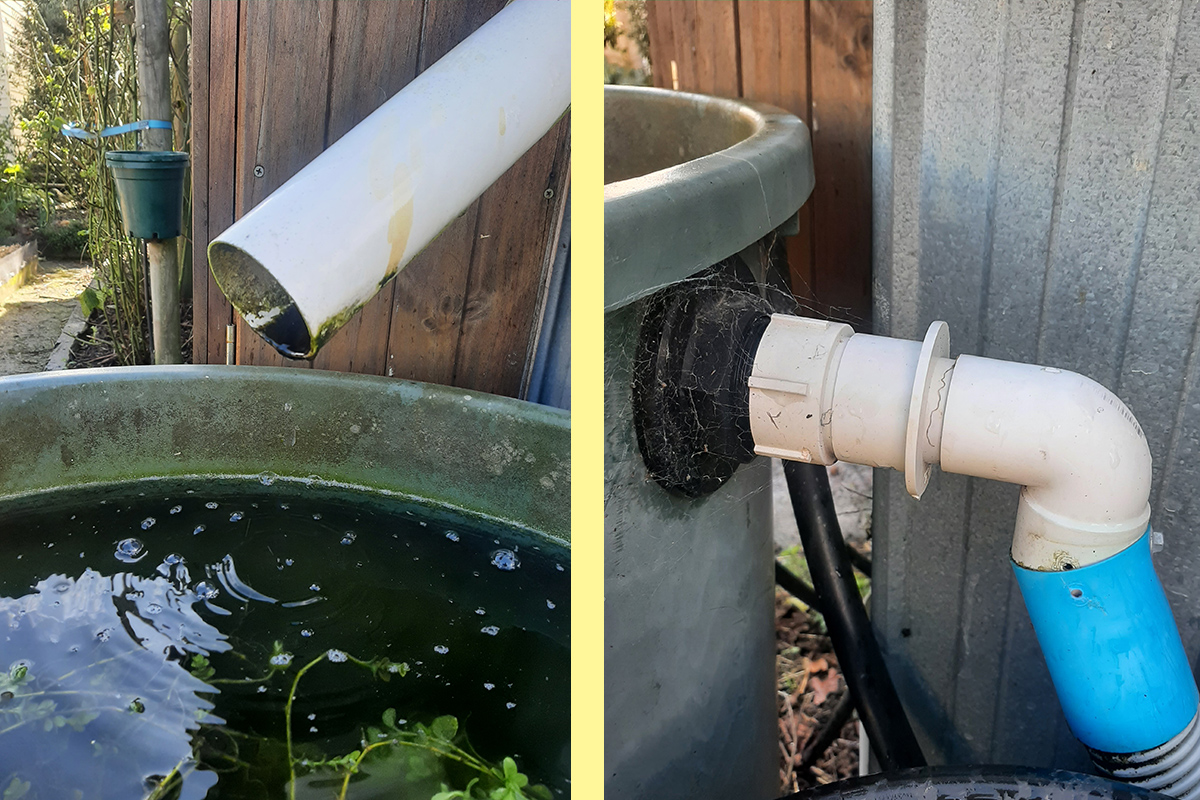
LEFT: The downpipe coming from my garage roof that supplies water to my dipping drum. RIGHT: The overflow pipe that draws off excess water once the drum is full. The hose fitted to the overflow pipe is flexible, allowing the end to be moved around to different points in the garden.
As the dipping drum is open at the top mosquitos can easily lay their eggs in it. To stop this happening I have two goldfish in the drum. Goldfish are tough, they can handle both extremes of heat and cold and sudden changes in water temperature as rain water floods into the tank during a heavy rain event. The goldfish that are currently in the drum have actually bred, which means that the conditions are good for them.
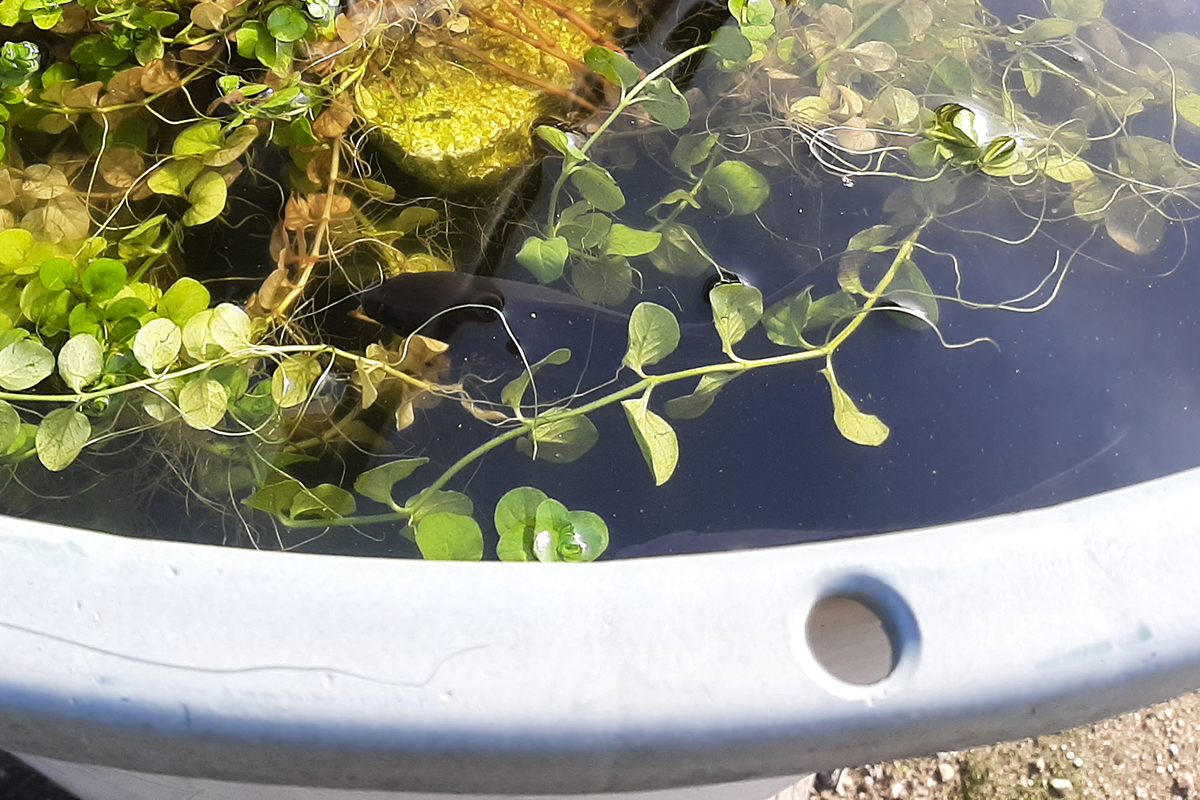
One of my goldfish sunny itself.
About ten years ago two wattle birds drown in the drum within months of each other. Wattlebirds (as do many other types of birds) like to wash themselves by briefly splashing in water before flying off again, something they regularly do in my dipping drum. If the water level becomes too low due to me dipping my watering can in it the sides of the drum can become too high for birds to fly out, trapping them on the surface of the water.
To remedy this I placed a bog plant in a pot (kept afloat by a piece of styrofoam) in the drum to offer a platform for birds to launch themselves from should they accidently fall into the water. Since putting this bog plant in no wattlebird has drowned in the drum despite it being regularly used by them to bathe in.
An added bonus is that this bog plant provides shelter for the goldfish on hot days.
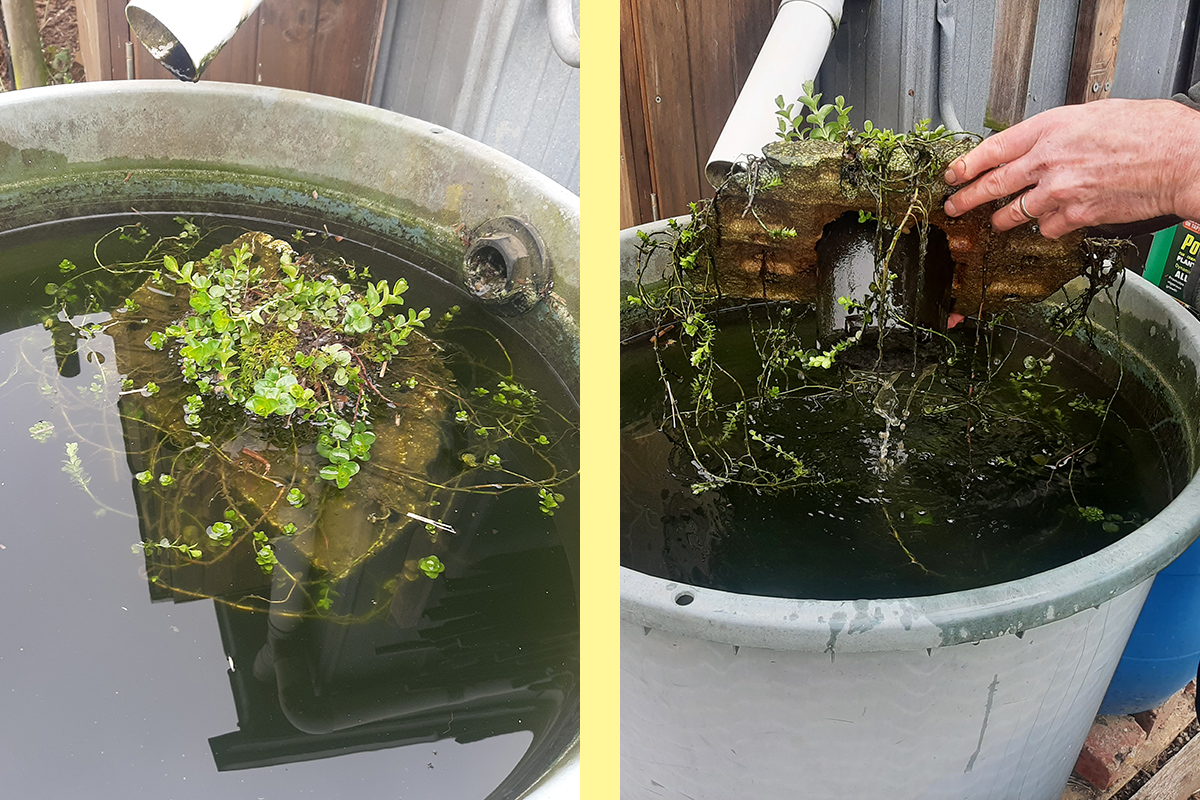
LEFT: The bog water plant used to provide a platform for wattlebirds to launch themselves from and to give shade to the goldfish. RIGHT: The underside of the bog plant. To keep the pot afloat I cut a hole in a piece of styrofoam (which is buoyant) and slotted the pot into it.



